Art Fairs
As the First Edition of Art Düsseldorf Opens, Will it Be a Game Changer in the German Art Market?
The fair is carving itself a stake in a country that already has three prominent fairs. Who's going to make it?

The fair is carving itself a stake in a country that already has three prominent fairs. Who's going to make it?

Kate Brown

The inaugural edition of Art Düsseldorf opened its doors yesterday with strong presentations for a bustling crowd of VIPs. It was a highly anticipated launch: for the past year, the German art world looked on tensely as the country’s art-fair schedule suddenly ballooned to include four fairs in 2017, pitting two major companies—and three cities—against each other.
Backed by Art Basel parent company MCH Group, Art Düsseldorf is staking its claim in Germany’s affluent Rhineland, traditionally the home turf of the world’s oldest fair, Art Cologne. To be sure, the region, which covers a loosely charted area along the Rhine, is a fertile ground for galleries: there’s plenty of money, an energetic base of knowledgeable collectors, and the two major cities of Düsseldorf and Cologne each have long (though somewhat dueling) histories as important cultural Meccas, raising up artists like Joseph Beuys, Candida Höfer, or Sigmar Polke, to name just a few.
Still, when the news came out that Germany was getting yet another fair—in addition to Art Cologne, the more regional Art Karlsruhe, and the latest attempt at bringing the art market to the German capital with art berlin—there was some collective wonder as to whether adding another one was going to be viable. Especially considering that it comes at a time of growing uncertainty about fairs, where mid-tier dealers are looking to different formats.
The controversy then became two-fold when Art Cologne’s parent company Koelnmesse took over the Berlin fair this year in a move that almost seemed reactionary. Is the German art market big enough for everyone to have their share?
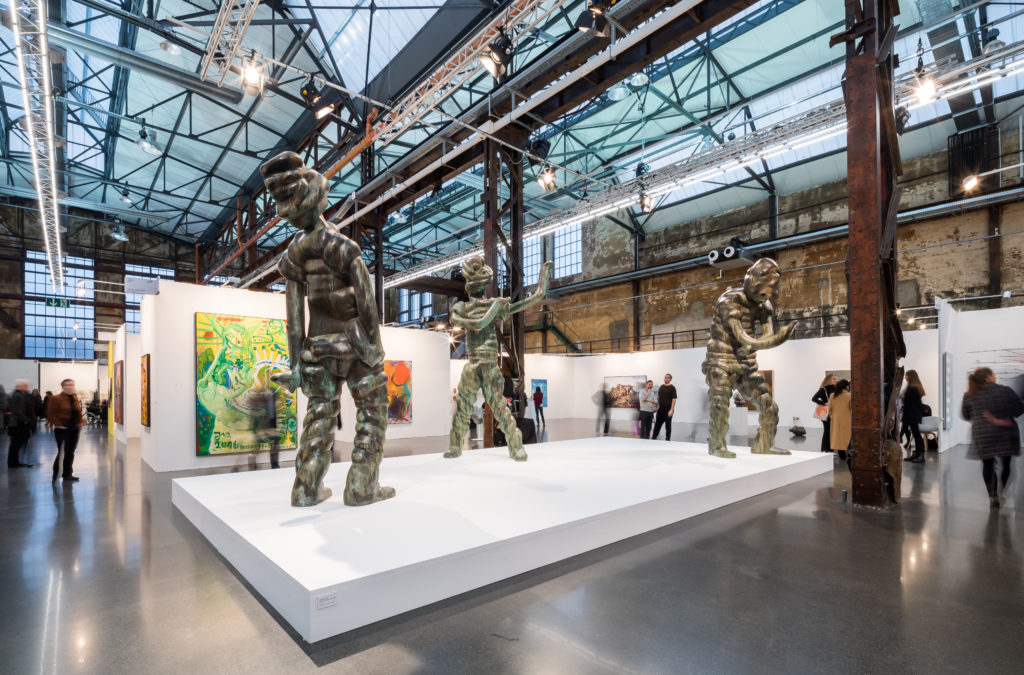
Installation view of Art Düsseldorf, 2017. Photo credit Sebastian Drüen
After the opening of Art Düsseldorf yesterday, it became clear that none of these questions can be answered yet. However, on preview day this Thursday, the former steel mill housing the fair was booming with fleets of art patrons, and it was decidedly an older- and wealthier-looking–crowd than the one seen at art berlin this past September. By the early afternoon, sales were strong and the mood convivial.
Paris- and Brussels-based Galerie Daniel Templon, for example, reported several works sold within the first few hours, including a photo by Gregory Crewdson for $68,000 and three works by Japanese artist Chiharu Shiota in the range of $30,000 to $50,000.
Alexander Sies from Sies + Höke Galerie was adamant that there is a place for both Art Cologne and Art Düsseldorf, due to their being completely different in nature. In general, dealers seemed rather sure that the collectors from the Rhineland and Benelux will show up to both.
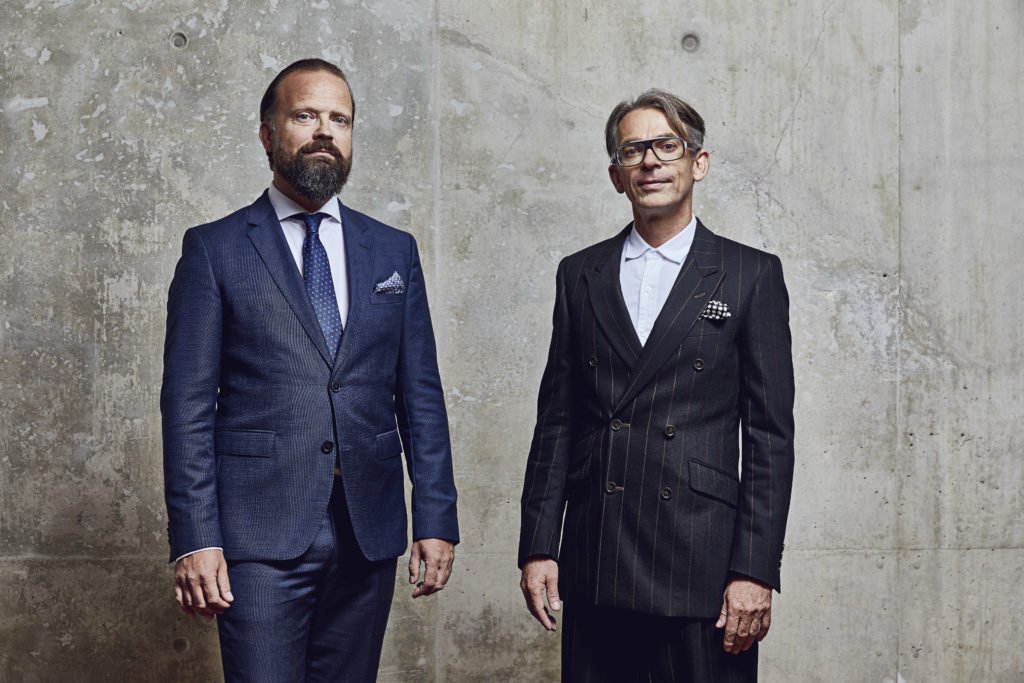
The directors of ART DÜSSELDORF (Walter Gehlen, l. and Andreas Lohaus, r.) Copyright: Boris Breuer
And yet throughout the day, everyone was murmuring about the Cologne-Düsseldorf binary, a narrative that couldn’t be avoided. The barrage of inquiries on the topic at the press conference seemed to visibly tire the fair’s co-director Walter Gehlen, mostly because he doesn’t think it’s a problem for the Rhineland to have two fairs per year (Art Cologne takes place in April). Maybe he’s right. Maybe.
Indicating the strong showing of powerful German galleries, Gehlen told artnet News, “Obviously it’s a fact that exhibitors from the Rhineland area think it’s a good idea to have a presentation here in autumn. That doesn’t mean that they don’t have a presentation in springtime. That’s not our motivation.”
“It makes sense to create these art fairs right in front of the doors of the collectors living in the region,” he added. “This is exactly what we are doing.”
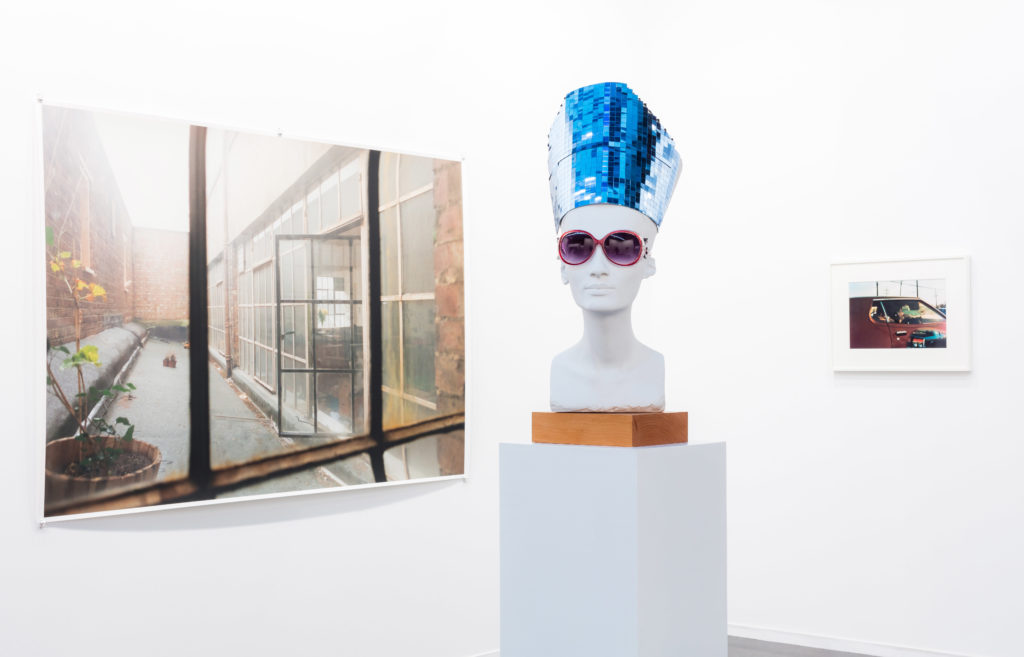
Installation view at Art Düsseldorf 2017. Photo credit Sebastian Drüen.
A Capsule-Sized Fair With a Focus
Before moving one city over, Gehlen had established ART.FAIR in Cologne in 2003 with his business partner, Andreas Lohaus. In this new endeavor in Düsseldorf, they opted for a smaller sized fair and established an independent committee to sift through applications. In the end, the 10 gallerists on the committee, including power figures like David Zwirner and young local dealers like Max Mayer, chose 80 galleries. (Gehlen provided an additional voice to break tie votes).
The capsule size was a good choice. Granted, when fairs claim a modest scale is designed to maintain focus, it’s sometimes met with a bit of skepticism. Art Düsseldorf, however, was convincing. The smaller quantity really did create a sense of higher quality; nearly every booth felt exceptional.
Among some highlights were the brilliant collaborative booths, including Düsseldorf-based Linn Lühn who shared their booth with New York gallery CANADA showing vibrant, large-scale paintings by American painter Katherine Bradford. It was paired with the German gallery’s group presentation that included impressive lamp works by Carmen D’Apollonio (there were eight, and every single one sold, for prices between 3,200 – 6,000 Euro plus VAT).
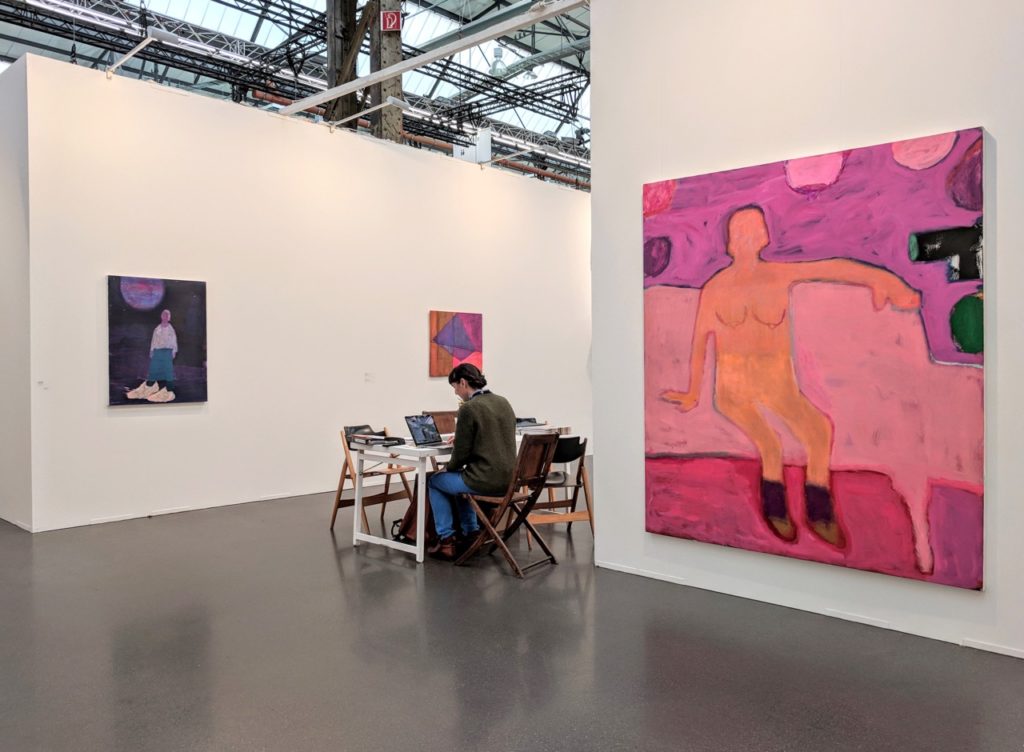
Installation view of Katherine Bradford at CANADA. Courtesy CANADA.
Then there were the German showstoppers. American gallery David Zwirner showed important works by Isa Genzken and Thomas Ruff. In the main concourse, three massive unsalable sculptures by Thomas Schütte were on view, a loan from a private collection.
In the References section, a handful of galleries were invited to pair historic works with contemporary ones. Michael Werner opted for a presentation of Reclining Nude (1939) by Francis Picabia alongside several German postwar artists including Sigmar Polke. The Picabia had an extravagant price tag of €5.8 million ($6.84 million). As of publishing time, the painting was still without a buyer.
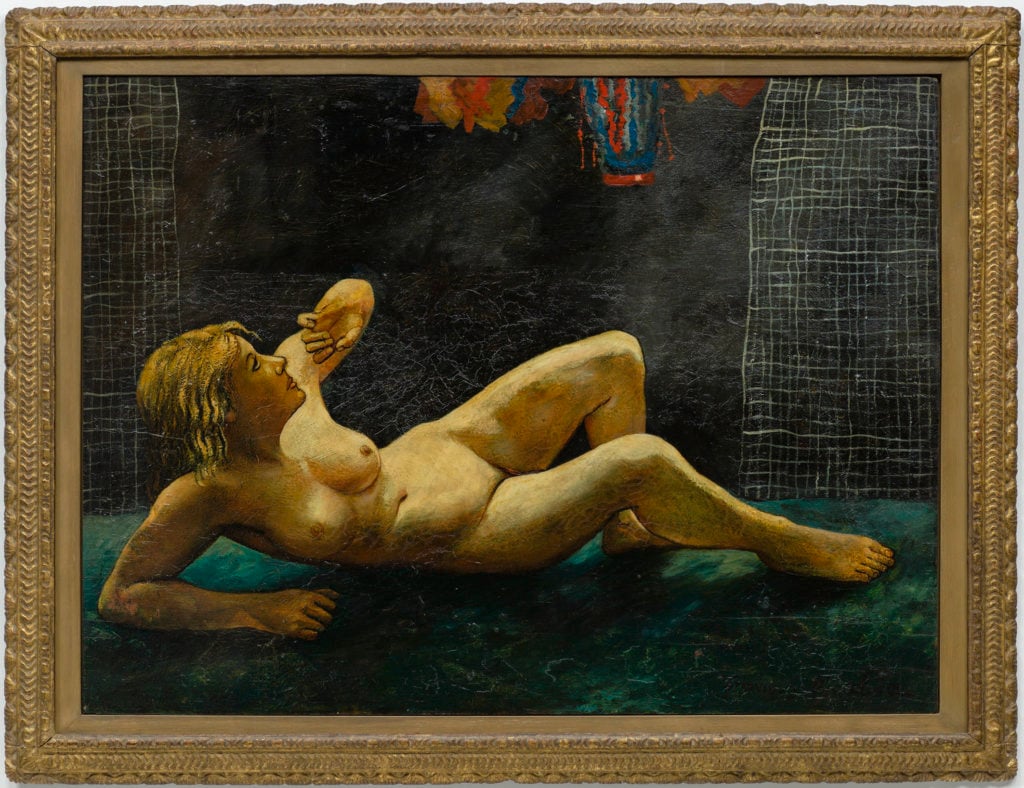
Francis Picabia’s Reclining Nude, (ca.1939). Courtesy Michael Werner Kunsthandel.
Düsseldorf’s Galerie Max Mayer (run by the son of established Rhineland gallerist Hans Mayer) paired up in a booth with Misako & Rosen from Tokyo. Mayer brought a LED light painting by Ei Arakawa, who showed similar works at this year’s Skulptur Projekte Münster, and Misako & Rosen showed several smaller paintings and collage by Richard Aldrich—a considerate curation of two intriguing artists who have been known to collaborate in the past.
The “Post-Crisis” Section
The younger Mayer has a vibrant program that he started in 2011, and so he was batched with the so-called Post-Lehman group, a section that included 13 galleries who opened after the 2008 crash. They were mostly allocated to a second hall (Gehlen confessed this was not part of the original plan but resulted from layout logistics), which did feel like a bit of an awkward appendage.
With smaller booths and reduced rates, to call this section by such a name felt both critical and honest. As the world recovers inch by inch from the recent financial crisis, the galleries that have opened since then, who are decidedly mid-sized, have faced uniquely difficult business conditions. In several cases this year, they’ve had to shutter their doors.
“We wanted to honor these brave galleries,” says Gehlen, “It’s a hard business to start a gallery space, especially in these hard times after the financial crisis started. We thought it would be a good idea to stress this.”
Despite the acknowledgement and provocative name, one might argue that the saturated art-fair market has also not been doing anyone any big favors.

Booth view of Linn Lühn. Courtesy Linn Lühn.
Galerie Max Mayer, for instance, is traversing the art fair market strategically while also seeking (and initiating) new formats. Mayer himself was one of the initiators of the gallery swap Okey Dokey that took place this fall. He was also notably absent from the art berlin fair (they were at the fair’s predecessor abc three years in a row). If Mayer’s case is any indication, it means that emerging galleries are going to choose not between Cologne and Düsseldorf, but rather Düsseldorf and Berlin.
Art Düsseldorf is open to the public at Areal Böhler until November 19.